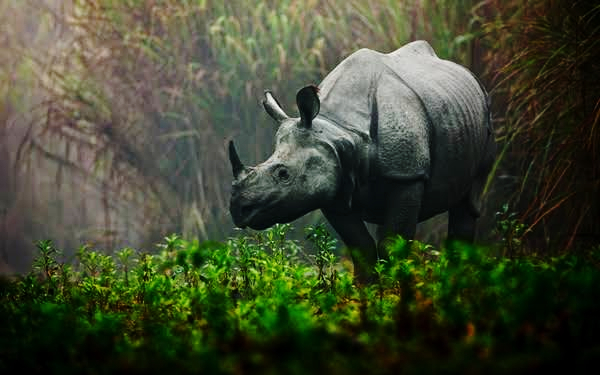GUWAHATI: From zero in late 2005 to 48 at present, militancy-hit Manas National Park has seen an encouraging jump rhino population — a reclamation by the Assam forest department, which has given a new lease of life to the picturesque Unesco world heritage site.
Impacted by local conflicts and socio-political unrest from the late-1980s till early-2000s, the park’s previously thriving population of 85-100 rhinos was wiped out due to poaching. With the rhinos playing a crucial role in maintaining the park’s habitat, the Assam government decided to reintroduce rhinos in 2005 as part of an ambitious programme: the Indian Rhino Vision 2020 (IRV 2020).
Under IRV 2020, from 2008 till April 13, 2021, 22 rhinos have been shifted from Pobitora and Kaziranga and released in Manas. From 2005 to mid-April, 2021, about 20 hand-reared rhinos who were rescued during the Kaziranga floods were also released in Manas.
The first rhino that was reintroduced in Manas in 2006 was brought from the Centre for Wildlife Rehabilitation and Conservation (CWRC) near Kaziranga National Park. The first wild-to-wild translocation of rhinos was done in 2008 when two adult males were successfully moved from Pobitora Wildlife Sanctuary to Manas.
“The recovery is one of the biggest achievements as there was not a single casualty in the translocation. The current rhino population in Manas is 48 in the core area of 500 square kilometer of the park and there has been no case of poaching as well in the past four and half years. Before 2016, 10 rhinos were poached,” Manas Tiger Reserve field director Amal Sarmah told TOI.
The IRV2020 programme was designed by the Rhino Task Force in 2005 with a vision to attain a population of 3000 rhinos spread over seven of the protected areas (PAs) by 2020. “2012 saw the first loss of a rhino to poaching. Births in subsequent years were offset by poaching. The IRV2020 partners perform regular monitoring and security assessments and make improvements based on recommendations by both local and worldwide experts. 2018 & ‘19 saw significant decrease in poaching,” Sarma said.
“Rhinos play an important role in the grassland ecosystem and their re-introduction in Manas in the past one and half decades shall enable effective management of grassland habitats which will not only provide space for rhinos but also other grassland dependent species. Salient success of IRV 2020 in past one and half decades include no casualties of rhino during capture or during release that reverberates that IRV 2020 also provided opportunities to build local skills and expertise in rhino capture and release,” said Dr Bibhab Kumar Talukdar, CEO of Aaranyak and senior advisor of International Rhino Foundation for Asian Rhinos.
Source: ToI
You may also like
-
New Heat-Based Approach To Cancer Treatment Can Reduce Chemotherapy Doses
-
Scientists Take A Major Step Towards Unification Of Classical & Quantum Gravity
-
India Graphene Engineering and Innovation Centre (IGEIC) Under the Vision of Viksit Bharat@2047 Launched
-
New High-Performance Gas Sensor can Monitor Low Level Nitrogen Oxides Pollution
-
Antidepressant Drug can be Repurposed for Treating Breast Cancer
